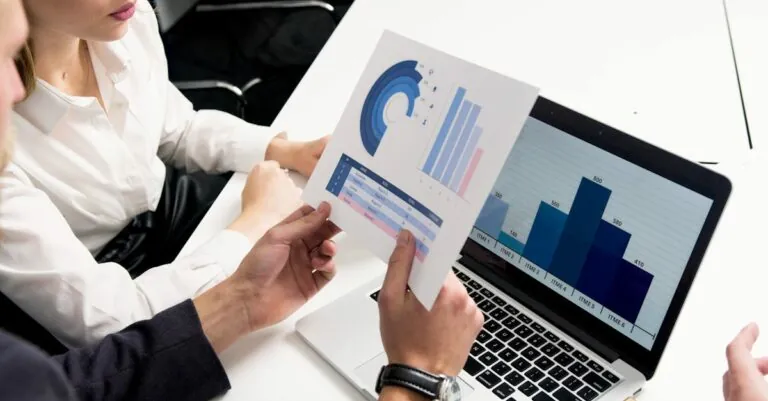Table of Contents
ToggleIn a world where even your toaster might be smarter than your high school math teacher, technology has woven itself into the fabric of daily life. From the moment the alarm clock blares to the time the last Netflix episode ends, tech is there, helping, entertaining, and sometimes just causing chaos. Imagine living without your smartphone—how would you survive those awkward silences or find the nearest coffee shop when you’re in desperate need of caffeine?
Every day, people harness the power of technology in ways that make life easier, more efficient, and occasionally a bit ridiculous. Whether it’s using apps to manage tasks or smart devices that turn homes into futuristic havens, technology is the trusty sidekick we didn’t know we needed. Let’s dive into ten ways tech shapes our lives and discover how it can make even the most mundane tasks a little more exciting.
Overview of Technology in Daily Life
Technology plays a crucial role in the routines of modern life. It influences how people communicate, work, and relax daily. Smart devices, such as smartphones and tablets, provide instant access to information and connect individuals with others regardless of distance.
Transportation methods have also evolved through technology, making travel faster and more efficient. Ride-sharing apps offer convenient alternatives to traditional taxis, while navigation tools help users find the quickest routes.
In homes, smart appliances automate tasks, saving time and effort. People can control lights, thermostats, and even refrigerators remotely, enhancing comfort and energy efficiency. Health monitoring devices track fitness levels and vital signs, promoting personal wellness through data-driven insights.
Education resources now utilize online platforms for enhanced learning experiences. Students access lectures, textbooks, and collaborative tools from anywhere, making education flexible and accessible. Work environments have adopted software solutions that streamline processes, enabling remote collaboration and improving productivity.
Entertainment choices expanded significantly due to technology. Streaming services deliver a vast array of movies, shows, and music, catering to diverse preferences. Social media platforms facilitate the sharing of personal content, fostering connections among users.
Overall, technology integrates seamlessly into daily activities, enriching the way people interact with the world. It shapes how tasks are performed, making everyday experiences more efficient and enjoyable. Through these enhancements, technology has become an indispensable part of life.
Communication
Technology significantly enhances communication in daily life through various tools and platforms. It enables individuals to connect instantly with others, regardless of geographical barriers.
Social Media Platforms
Social media platforms serve as primary channels for sharing updates and connecting with friends. Facebook, Instagram, and Twitter facilitate interaction through posts, comments, and messaging. Users can also join communities that align with their interests, fostering a sense of belonging. With billions of users worldwide, these platforms connect people from diverse backgrounds and cultures. Businesses utilize social media for marketing, reaching larger audiences and engaging with customers in real-time. The ability to share multimedia content enhances communication, making interactions more engaging and informative.
Instant Messaging Apps
Instant messaging apps streamline conversations by providing real-time text exchange. WhatsApp, Telegram, and Signal offer features like group chats, voice calls, and video sharing. Users appreciate the convenience of communicating without delays, making it easier to coordinate plans or share important information. Privacy settings and encryption features enhance security, building trust among users. Notifications alert individuals to new messages, ensuring they stay connected throughout the day. Collaboration tools within these apps facilitate teamwork, allowing users to share documents and work together efficiently, thereby improving productivity.
Education
Technology plays a crucial role in education, providing innovative solutions that enhance learning experiences. Both students and teachers benefit from these advancements.
Online Learning Resources
Online learning resources offer vast opportunities for education. Websites like Khan Academy and Coursera provide acess to numerous courses across various subjects. Videos, articles, and interactive quizzes engage students, making learning dynamic. Accessibility becomes easier with these platforms, as learners can study at their own pace. Additionally, many universities and institutions have embraced online offerings, allowing students to balance education with other commitments. Flexible schedules cater to diverse lifestyles, enabling more individuals to pursue learning opportunities. Resources available online contribute to democratizing education, making high-quality content accessible to anyone with an internet connection.
Educational Apps
Educational apps serve as invaluable tools for both learning and teaching. Apps such as Duolingo and Quizlet make studying languages and concepts enjoyable and intuitive. Gamification enhances engagement, helping users stay motivated through rewards and challenges. Many educational apps incorporate tracking features, allowing users to monitor their progress over time. By providing personalized learning experiences, these tools adapt to individual needs. Teachers also utilize apps to create interactive assignments and facilitate communication with students. Overall, educational apps create a responsive and supportive environment that nurtures academic growth.
Health and Fitness
Technology plays a crucial role in enhancing health and fitness routines. Various devices and applications support personal wellness goals effectively.
Wearable Technology
Wearable technology includes devices like fitness trackers and smartwatches. These gadgets monitor vital health metrics such as heart rate, sleep patterns, and activity levels. With features like reminders for movement, they motivate users to stay active. Many wearables integrate with smartphones for seamless syncing and data analysis. As a result, users gain valuable insights into their health, enabling informed lifestyle choices. Popular brands include Fitbit and Apple Watch, which offer a range of functionalities aimed at improving overall fitness and well-being.
Fitness Apps
Fitness apps provide tailored workout experiences and nutrition tracking. Users can find a variety of apps focusing on different exercises, such as running, cycling, or yoga. Many platforms offer guided workouts and video tutorials, making it easier to follow along. Community features within these apps encourage interpersonal support among users. Some well-known fitness apps include MyFitnessPal and Strava, which allow individuals to set goals and track progress. Enhanced accessibility and engagement with fitness content promote a healthier lifestyle for users.
Home Automation
Home automation brings convenience and efficiency to daily life. Integration of technology in the home environment simplifies everyday tasks.
Smart Home Devices
Smart home devices enhance functionality and comfort. Examples include smart thermostats that adjust temperatures automatically, smart lights that can be controlled remotely, and smart speakers that respond to voice commands. These devices increase energy efficiency by optimizing usage patterns and reducing unnecessary consumption. Integration with smartphones allows for seamless control from anywhere, making it easy to manage home settings while away. Additionally, smart appliances like refrigerators can send alerts for expiring food items, promoting better inventory management. Overall, smart home devices transform living spaces into efficient and responsive environments.
Home Security Systems
Home security systems provide enhanced safety through technological innovation. Features like smart cameras allow real-time monitoring of properties, delivering alerts directly to smartphones. Motion detectors and door/window sensors add layers of security, ensuring potential threats can be identified quickly. Remote access enables users to view camera feeds, control locks, and manage alarms from anywhere. Furthermore, some systems integrate with smart home devices, creating a comprehensive security network. These advancements contribute to peace of mind for homeowners, ensuring their properties remain safe even when they are away.
Entertainment
Technology plays a vital role in entertainment, offering a variety of options for leisure activities. Streaming services and video games represent two significant ways technology has transformed entertainment.
Streaming Services
Streaming services revolutionized how people consume media. Platforms like Netflix, Hulu, and Disney+ provide instant access to movies and TV shows. Users can watch content on-demand without needing cable subscriptions. These services cater to diverse preferences, offering original series, documentaries, and films, ensuring there’s something for everyone. Moreover, the flexibility to binge-watch entire seasons enhances the viewing experience. The rise of mobile apps allows users to watch on smartphones or tablets, enabling entertainment on the go.
Video Games
Video games offer immersive experiences that engage players of all ages. Consoles like PlayStation and Xbox, along with PC gaming, provide access to high-quality graphics and complex stories. Multiplayer games allow individuals to connect and compete online, fostering community among gamers. Mobile gaming has also surged, making gaming accessible anytime, anywhere. Virtual reality technology takes engagement to new heights, creating lifelike experiences. The gaming industry continues to grow, appealing to casual and hardcore gamers alike.
Transportation
Technology significantly enhances daily transportation experiences, making them more efficient and user-friendly. Numerous advancements in navigation and ride-sharing services illustrate this impact.
Navigation Apps
Navigation apps like Google Maps and Waze simplify travel by providing real-time traffic updates and route suggestions. Users benefit from turn-by-turn directions that adapt to changing road conditions. Additionally, these apps offer features such as estimated arrival times and alternative routes, helping to avoid delays. Moreover, integration with public transportation schedules allows commuters to plan their trips more effectively. They also facilitate finding nearby amenities, fostering convenience during travels.
Ride-Sharing Services
Ride-sharing services such as Uber and Lyft transform how people commute. Passengers can quickly request rides through mobile applications, simplifying the process of hailing a taxi. Drivers benefit from optimized routes and surge pricing that adjusts based on demand. The convenience of cashless payments increases user satisfaction and speeds up transactions. These services also offer various vehicle options to accommodate different needs, enhancing accessibility across urban environments. Additionally, many platforms feature ride-sharing pools, encouraging carpooling and reducing overall traffic congestion.
Technology’s influence on daily life is undeniable. It streamlines communication enhances education and transforms entertainment. From smart devices that manage homes to apps that promote health and fitness technology makes everyday tasks more manageable and enjoyable.
As society continues to embrace innovation the impact of technology will only grow. It’s clear that these advancements not only improve efficiency but also foster connections and enrich experiences.
Embracing technology in daily routines isn’t just a trend; it’s a necessity that shapes the way individuals interact with the world around them.







